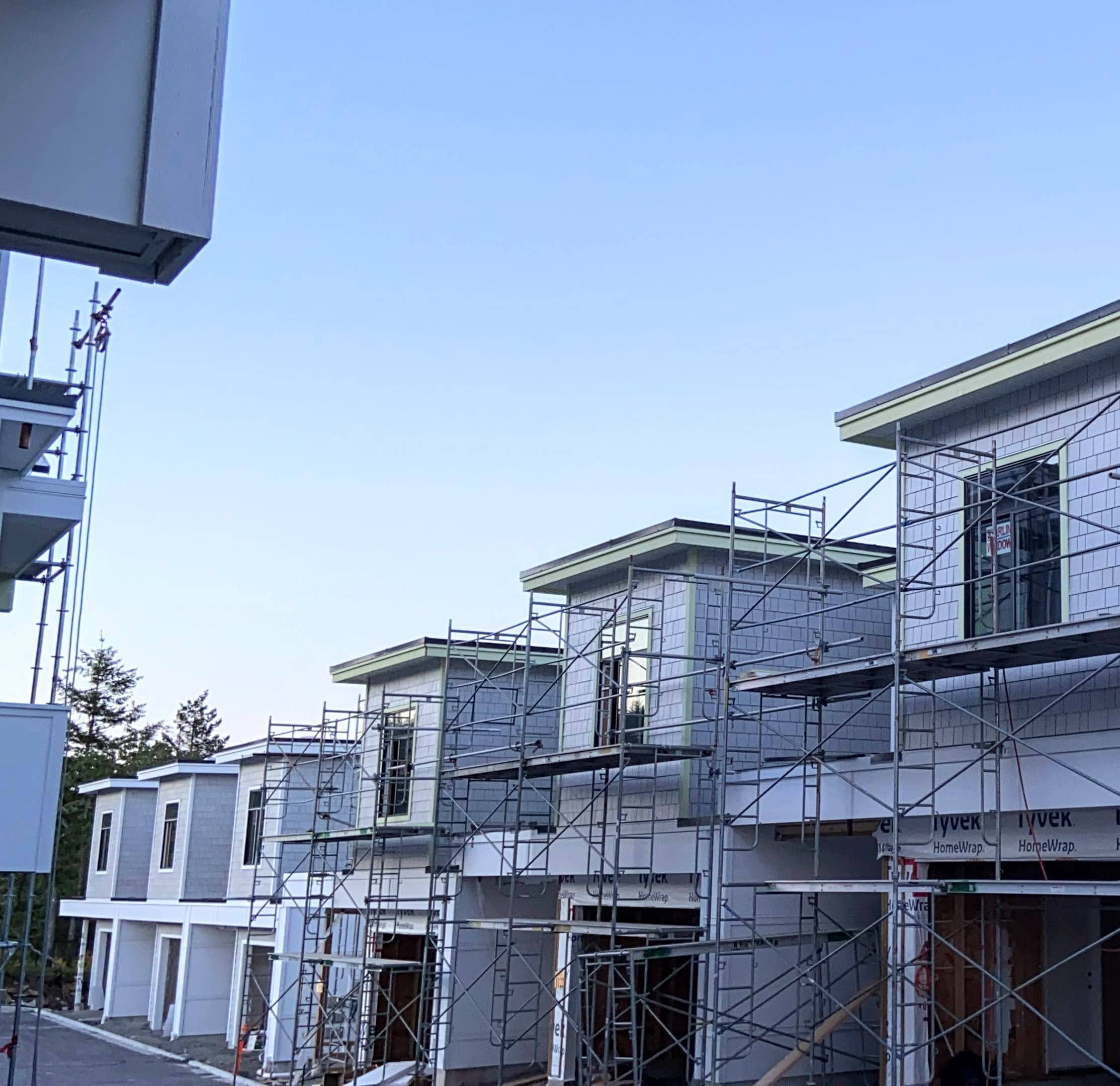Choosing the right exterior paint for your home is crucial, especially when you live in Canada. Our winters can be harsh, with extreme cold, heavy snow, and ice. So, it’s only natural that these conditions can put a toll on the exterior surfaces of your home.
With that in mind, selecting a paint that can endure these elements will help maintain the beauty and integrity of your home for years to come. With the right preparation and products, you can protect your home’s exterior against the toughest Canadian winters. Let’s dive into what you need to know to make the best choice!
Understanding the Challenges of Canadian Winters
Canadian winters present unique challenges that can impact your home’s exterior paint. The extreme cold is one of the most significant factors. Temperatures can drop well below freezing, causing paint to contract and potentially crack over time. This issue can be exacerbated by sudden temperature fluctuations, which are common in many Canadian regions.
Moisture is another critical challenge. Snow and ice accumulation can lead to water infiltration when the temperatures rise. This moisture can seep into cracks and crevices, causing the paint to bubble and peel.
Additionally, the repeated freeze-thaw cycles can weaken the bond between the paint and the surface, leading to premature failure. So, it’s essential to choose a paint that can withstand these tough conditions to maintain your home’s exterior integrity.
Key Features to Look for in Exterior Paint
When selecting exterior paint for Canadian winters, look for several key features. First, opt for paints with high flexibility. Flexible paints can expand and contract with the temperature changes without cracking, making them ideal for harsh climates. Look for paints specifically labeled as being suitable for cold weather application to ensure they meet this criterion.
Another critical feature is moisture resistance. Choose paints that offer excellent resistance to water and snow to prevent peeling and bubbling. These products often contain special additives that create a barrier against moisture infiltration.
Additionally, consider paints with high durability and UV resistance. These paints can withstand the cold and moisture and the sun’s harsh rays, which can cause fading and degradation over time. A durable, UV-resistant paint will help keep your home looking vibrant and well-protected throughout the year.
By focusing on these essential features, you can select an exterior paint that will provide long-lasting protection and maintain the beauty of your home, even in the harshest Canadian winters.
Best Types of Paint for Cold Weather Durability
Selecting the right type of paint is crucial for ensuring your home’s exterior withstands the colder months. Acrylic latex paints are highly recommended for Canadian winters due to their flexibility and durability. These water-based paints are less likely to crack as they expand and contract with temperature changes. They also dry quickly, reducing the risk of issues caused by sudden weather shifts.
Another excellent choice is elastomeric paint. This type of paint forms a thick, rubber-like coating that can stretch and return to its original shape without damage. Elastomeric paints provide superior protection against moisture, making them ideal for harsh winter conditions involving snow and ice.
Additionally, they offer excellent adhesion to a variety of surfaces, including wood, stucco, and concrete, ensuring a long-lasting finish that resists peeling and flaking. For those seeking the highest level of protection, consider using epoxy-based paints. These are generally used for industrial applications but can also be ideal for residential exteriors exposed to extreme conditions.
Epoxy paints offer exceptional resistance to chemicals, moisture, and temperature fluctuations. They create a robust, impermeable barrier that protects the underlying material from the most severe winter weather.
Expert Tips for Proper Paint Application in Winter
Even the best paint will fail if not applied correctly, especially during winter months. Begin by choosing a day with favourable weather conditions; ideally, temperatures should be above 10°C, and the surfaces should be dry. Avoid painting in extremely cold or damp conditions, as this can hinder proper adhesion and curing of the paint.
Preparation is key. Ensure that the surface is thoroughly cleaned and free of dirt, mildew, and old, flaking paint. Use a high-quality primer suitable for cold weather to create a strong base for the new paint. Priming is especially important when dealing with porous surfaces like wood or masonry, as it helps the paint adhere better and last longer.
When applying the paint, use multiple thin coats rather than one thick layer. This approach allows each layer to dry and cure properly, providing a more durable finish. Be mindful of drying times; cold and damp conditions can extend these periods, so plan accordingly.
If possible, use paint products specifically designed for cold weather application, as these are formulated to cure better at lower temperatures.
Elevate Your Home with the Right Winter Paint Choices
Choosing the perfect exterior paint for Canadian winters involves understanding the unique challenges posed by our harsh climate and selecting products designed to withstand these conditions.
By focusing on the right features and types of paint, along with adhering to expert application tips, you can ensure your home’s exterior remains protected and looking great all year round. Proper preparation and the use of high-quality materials are critical in achieving a long-lasting and durable paint job.
For superior exterior house painting services in Victoria, BC, contact Xico Enterprises Inc. Our team is ready to deliver professional workmanship that withstands the harshest conditions!



